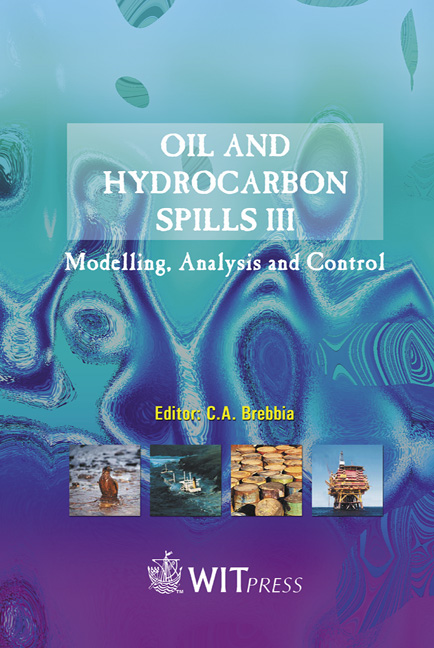Identification Of Petroleum Hydrocarbon Contamination In The Egyptian Mediterranean Seashore
Price
Free (open access)
Transaction
Volume
59
Pages
Published
2002
Size
474 kb
Paper DOI
10.2495/OIL020091
Copyright
WIT Press
Author(s)
M. M. Soliman Youssif
Abstract
Identification of petroleum hydrocarbon contamination in the Egyptian Mediterranean seashore M. M. Soliman Youssif Egyptian Petroleum Research Institute, Cairo, Egypt Abstract Surface water samples and intertidal sediment samples from Marsa Matrouh seashore were analyzed in 1999 for petroleum hydrocarbons. Analyses were carried out on the extracted oils by capillary gas chromatography (GC) and high performance liquid chromatography (HPLC). Levels of petrolum hydrocarbons in sediment samples ranged from 9.6 pg/g, to 57.2 pg/g., whereas for water samples varied from 1.28 mg/L to 14.57 mg/L. Components of polycylic aromatic hydrocarbons were detected and assessed in the studied samples such as benzo (a) pyrene, indeno (1,2,3-cd) pyrene, benzo (K) fluoranthene and dibenzo (a,h) anthracene. Total PAHS in sediments ranged from 3.2 ng/g up to 3371 ng/g dry weight and for surface water sampels varied from 80.26 to 313.09 pg/L. Gas chromatographic analysis reveals numerous inputs of petroleum products including crude oils and fuel oils. Introduction The Mediterranean Sea is considered to be one of the most polluted seas in the world Golik et al. [l]. More than 20% of the world oil transport takes place in this sea. There is heavy tanker traffic across the Mediterranean from the Suez Canal and North Africa to terminals and refineries on the European Coast. This journey time is, in most cases, too short for effective use of the "Load on Top" method for reducing oil from cargo hold washings. Intentional discharges of oil washing and ballast water from oil tankers before reaching loading terminals cause casual oil pollution of the Mediterranean sea water.
Keywords





